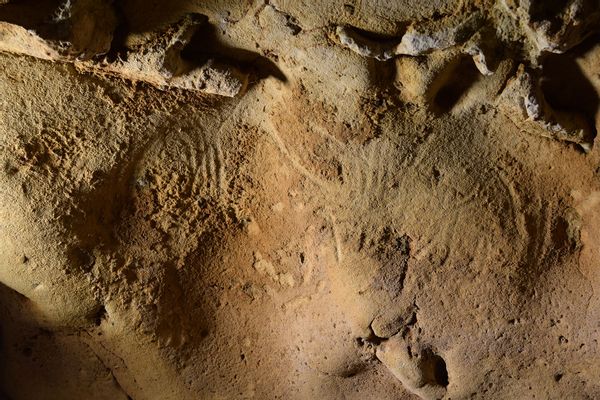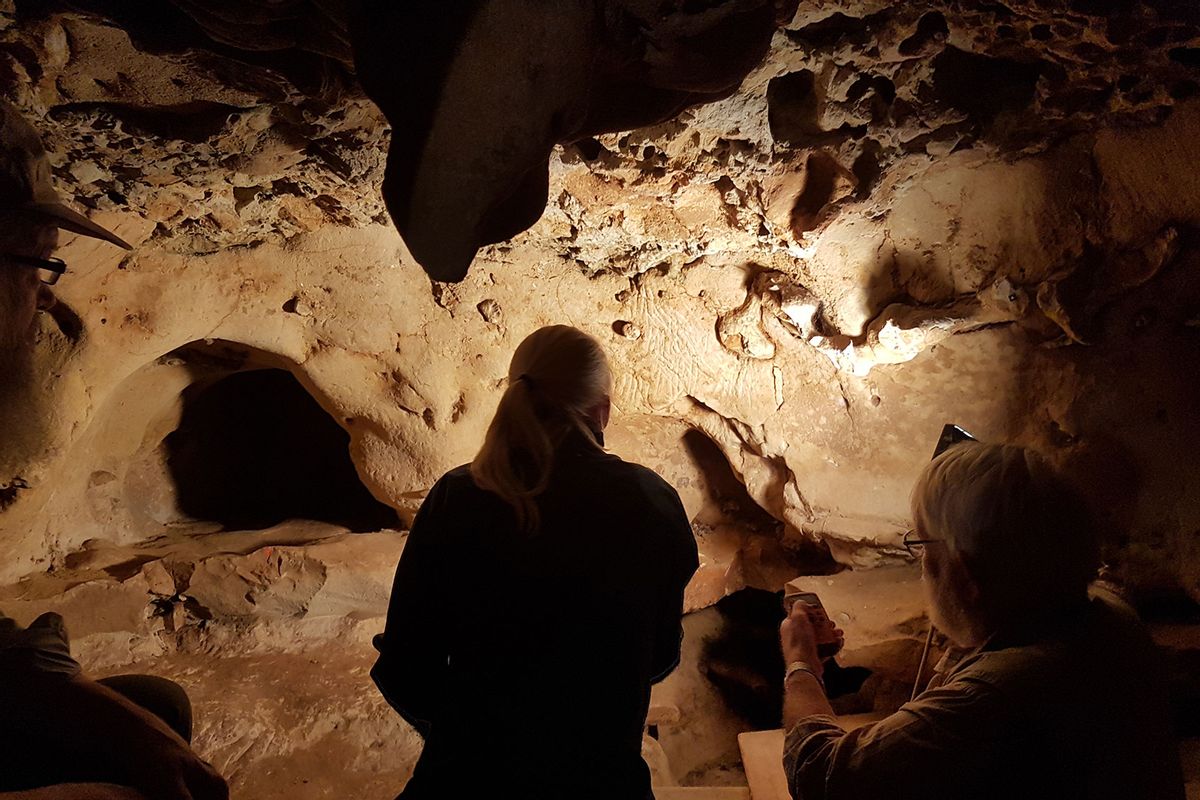Neanderthals are popularly regarded as the large and stupid cousins of humans who lack our intellectual sophistication. After all, they went extinct — we didn't (at least not yet.) Despite decades of archaeological research debunking the idea that our ancient relatives were the black sheep of our collective primate family, this disparaging anti-Neanderthal notion persists. Yet, according to researchers who recently analyzed famous cave paintings in France, we've known for a long time that Neanderthals are capable of tool-making, art, perhaps even music. Now, a new study sheds light on just how ancient Neanderthal art is, a staggering 57,000 years old.
According to researchers who recently analyzed famous cave paintings in France, there is another adjective that should be associated with Neanderthals — artistically inclined.
Indeed, as the scholars led by Jean-Claude Marquet of France's University of Tours assert in their new study for the scientific journal PLOS One, Neanderthals used complex combinations of lines, dots and swirls in soft rock to create detailed images at the cave of La Roche-Cotard. Although some experts speculated that the symbols could have been made accidentally, by animals or by humans after the cave's excavation in 1912, Marquet and his team conducted experiments to determine whether they were made with actual artistic intention.
To demosntrate this, they created 3D models of the caves using a technology known as photogrammetry, attempted to recreate symbols in similar parts of the caves using instruments available to Neanderthals, and ran through every conceivable scenario that could have led to those markings appearing in those caves.
Their conclusion? At least eight panels in the caves contain markings with intentional patterns and shapes, and were clearly created by human hands. (Neanderthals are technically human, which is how Homo sapiens have been able to breed with them.) Given the careful and precise nature of how they were created, they could not have been put there for some utilitarian purpose, such as scooping out large quantities of rock.
 Examples of engravings discovered in the Roche-Cotard cave (Indre et Loire - France). On the left, the "circular panel" (ogive-shaped tracings) and on the right the "wavy panel" (two contiguous tracings forming sinuous lines). (Jean-Claude Marquet)This means that those eight panels were "a seemingly organized set on the longest and most regular wall away from the cave entrance" and a "deliberate composition, and is the result of a thought process giving rise to conscious design and intent." Additionally, they found that some of the stone tools in the cave were Mousterian, a Middle Paleolithic culture that is known for its skillfully crafted flake tools.
Examples of engravings discovered in the Roche-Cotard cave (Indre et Loire - France). On the left, the "circular panel" (ogive-shaped tracings) and on the right the "wavy panel" (two contiguous tracings forming sinuous lines). (Jean-Claude Marquet)This means that those eight panels were "a seemingly organized set on the longest and most regular wall away from the cave entrance" and a "deliberate composition, and is the result of a thought process giving rise to conscious design and intent." Additionally, they found that some of the stone tools in the cave were Mousterian, a Middle Paleolithic culture that is known for its skillfully crafted flake tools.
Although the researchers could not directly date the engravings (or finger flutings, as "engraving" here means rock manually removed by fingers), they used optically stimulated luminescence dating to determine that the minerals in the sediment were at least 57,000 years ago before the cave was sealed off, give or take 3,000 years.
Want more health and science stories in your inbox? Subscribe to Salon's weekly newsletter The Vulgar Scientist.
"The attribution to Neanderthal of the graphic productions at La Roche-Cotard pays tribute to this lost humanity, whose role in the biological and cultural evolution of humans is undergoing profound revision."
"The attribution to Neanderthal of the graphic productions at La Roche-Cotard pays tribute to this lost humanity, whose role in the biological and cultural evolution of humans is undergoing profound revision," the authors write in their conclusion. "In terms of culture, we now have a better understanding of the plurality of Neanderthal activities, attesting to elaborate and organized social behaviours that show no obvious differences from those of their contemporaries, Anatomically Modern Humans, south of the Mediterranean."
The authors of the study mentioned other notable examples of Neanderthal art. In 2021, scholars writing for the journal Nature Ecology & Evolution reported the discovery of an at least 51,000-year-old engraved giant deer phalanx at the former cave entrance of Germany's Einhornhöhle. They argued the engraved bone "demonstrates that conceptual imagination, as a prerequisite to compose individual lines into a coherent design," existed in Neanderthals. In 2014 researchers announced the discovery in Gibraltar's Gorham's Cave of "the first known example of an abstract pattern engraved by Neanderthals" with a design whose lines were rendered through repeated using a pointed lithic tool to create precise grooves, "excluding the possibility of an unintentional or utilitarian origin."
In 2013 researchers also contributing to the journal PLOS One found a fragment of a fossil marine shell in northern Italy's Fumane Cave. After determining that the shell had been covered in a red pigment, the researchers examined all of its possible uses and determined the likeliest explanation is that "the object was modified and suspended by a 'thread' for visual display as a pendant." A 2010 study in the journal PNAS similarly found evidence of shells and shell fragments being used as ornamentation.
All of this previous research reinforces the point made by those who studied the cave paintings at La Roche-Cotard: Neanderthals were much more interesting than their boorish stereotype has many believe. As the authors state in their conclusion, the cave painting they studied predates even "masterpieces" like "the cave of Chauvet-Pont d'Arc" or "those recently discovered in the Sulawesi caves." Ultimately their study demonstrates "that the engraved marks at the [La Roche-Cotard caves[ are clearly attributable to an earlier period."

Shares